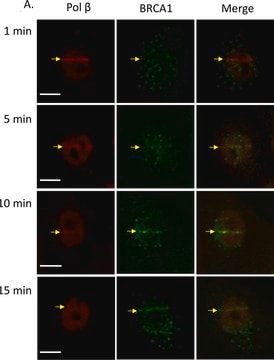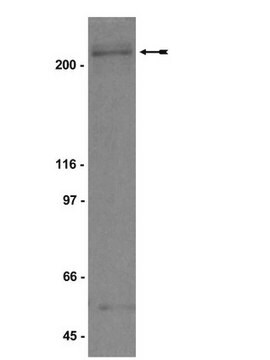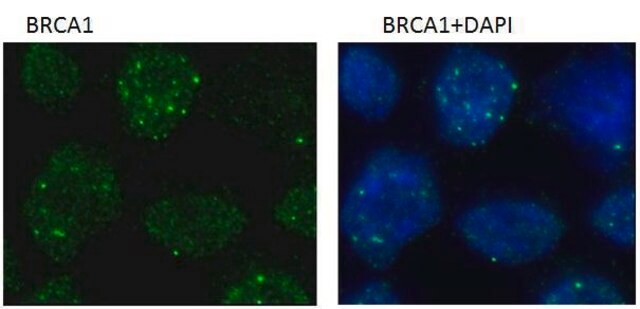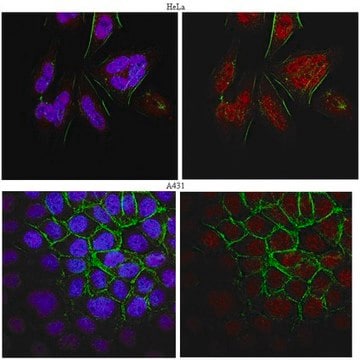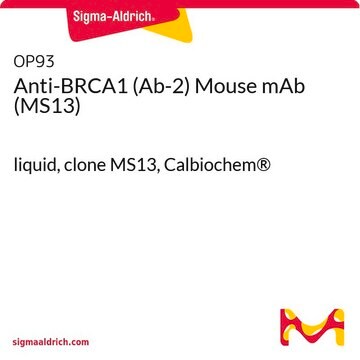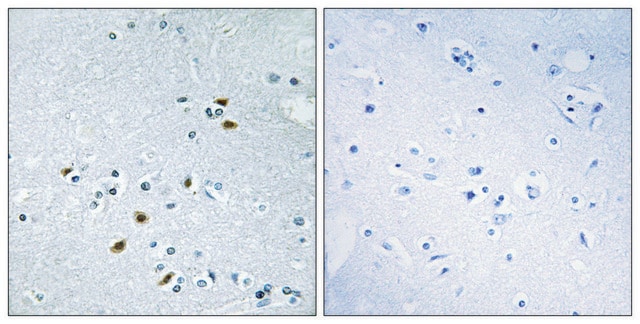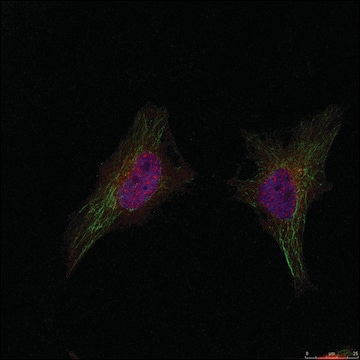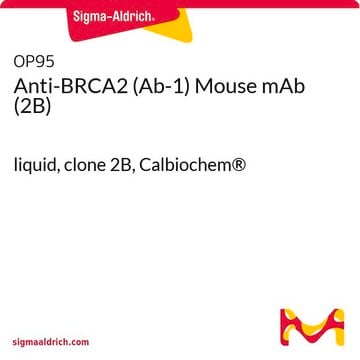MABC199
Anti-BRCA1 Antibody, clone MS110
clone MS110, from mouse
Synonim(y):
Breast cancer type 1 susceptibility protein, RING finger protein 53
Wybierz wielkość
2100,00 zł
Przewidywany termin wysyłki22 kwietnia 2025Szczegóły
Wybierz wielkość
About This Item
2100,00 zł
Przewidywany termin wysyłki22 kwietnia 2025Szczegóły
Polecane produkty
pochodzenie biologiczne
mouse
Poziom jakości
forma przeciwciała
purified immunoglobulin
rodzaj przeciwciała
primary antibodies
klon
MS110, monoclonal
reaktywność gatunkowa
human
metody
immunocytochemistry: suitable
western blot: suitable
izotyp
IgG1κ
numer dostępu NCBI
numer dostępu UniProt
Warunki transportu
wet ice
docelowa modyfikacja potranslacyjna
unmodified
informacje o genach
human ... BRCA1(672)
Opis ogólny
Specyficzność
Immunogen
Zastosowanie
Immunoprecipitation Analysis: A representative lot from an independent laboratory immunoprecipitated BRCA1 in IP (Wilson, C. A., et al. (1999). Nat Genet. 21(2):236-240.).
Immunohistochemistry Analysis: A representative lot from an independent laboratory detected BRCA in ovarian cancer and breast cancer tissues (Scully, R., et al. (1996). Science. 272(5258):123-126; Wilson, C. A., et al. (1999). Nat Genet. 21(2):236-240.).
Immunofluorescence Analysis: A representative lot from an independent laboratory detected BRCA1 in a variety of certain cell lines (Scully, R., et al. (1996). Science. 272(5258):123-126.).
Apoptosis & Cancer
Cell Cycle, DNA Replication & Repair
Jakość
Western Blot Analysis: 1 µg/mL of this antibody detected BRCA1 in 10 µg of HeLa nuclear extract.
Opis wartości docelowych
Postać fizyczna
Przechowywanie i stabilność
Komentarz do analizy
HeLa nuclear extract
Inne uwagi
Oświadczenie o zrzeczeniu się odpowiedzialności
Nie możesz znaleźć właściwego produktu?
Wypróbuj nasz Narzędzie selektora produktów.
polecane
Kod klasy składowania
12 - Non Combustible Liquids
Klasa zagrożenia wodnego (WGK)
WGK 1
Temperatura zapłonu (°F)
Not applicable
Temperatura zapłonu (°C)
Not applicable
Certyfikaty analizy (CoA)
Poszukaj Certyfikaty analizy (CoA), wpisując numer partii/serii produktów. Numery serii i partii można znaleźć na etykiecie produktu po słowach „seria” lub „partia”.
Masz już ten produkt?
Dokumenty związane z niedawno zakupionymi produktami zostały zamieszczone w Bibliotece dokumentów.
Active Filters
Nasz zespół naukowców ma doświadczenie we wszystkich obszarach badań, w tym w naukach przyrodniczych, materiałoznawstwie, syntezie chemicznej, chromatografii, analityce i wielu innych dziedzinach.
Skontaktuj się z zespołem ds. pomocy technicznej